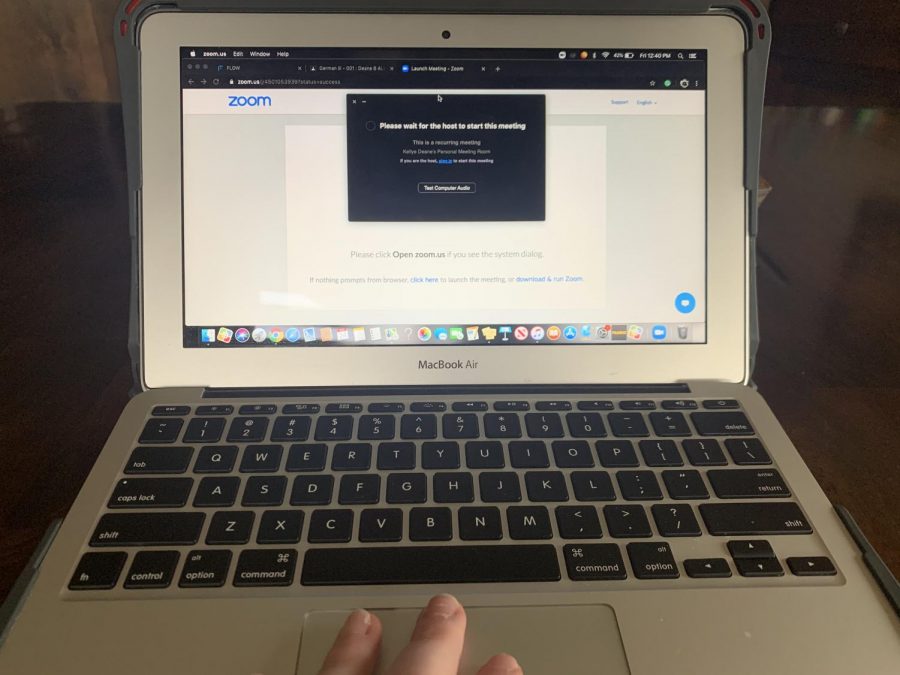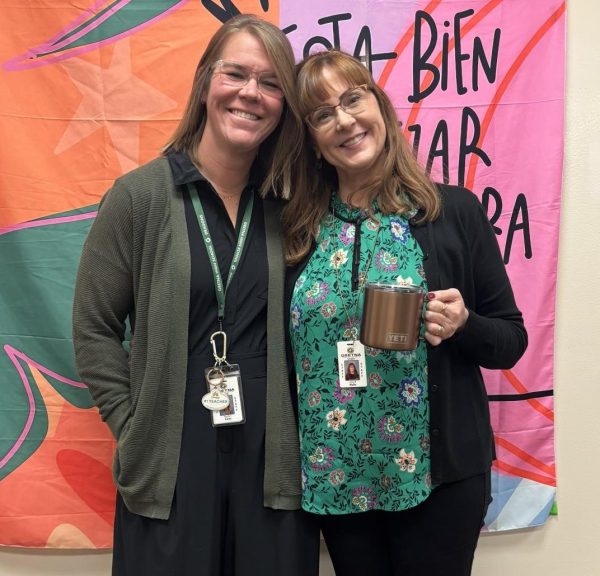Learning From A Distance
Teacher, Students Perspective On E-Learning
Room For Improvement: “I believe e-learning could be more improved if we did it more like the college-style,” Chandler Brown (21) said. “Every class still had their hours just online instead of in the classroom.”
Nobody thought that the last day of school would be spent at home. March 13 was the last day classes were physically taught in the classroom. Since moving to online learning, students and instructors have been in a period of adjustment. Senior Keegan Towey finds the e-learning process requiring more responsibility from students.
“I like the e-learning process for some reasons, but for others I dislike it,” Towey said. “I enjoy doing things around my own schedule, especially since virtual meetings are not required. With that, comes a lot of responsibility and time management is necessary. I sometimes struggle with that, but if I stay motivated I am alright. Some weeks are better than others depending on the course load.”

Missing School: “I do not prefer zoom over the classroom,” Towey (20) said. “I miss being at school and having to access to teacher easier. Also, it is nice to feed off of classmates and friends. Some teachers are very good at seeing when you are struggling even if I do not say anything, which I like, but I am not able to get with e-learning.”
E-learning is definitely a process that requires more responsibility. Students like junior Chandler Brown find e-learning to be more difficult.
“I believe Zoom is a good way to get in contact with the teachers but to learn it’s not the same as being able to sit down with the teacher in a physical classroom,” Brown said. “I think Zoom has had a negative effect on my learning because it’s so much easier to get sidetracked and forget what you were just doing while trying to learn from home.”
Zoom is something for Brown that has a more negative effect on his e-learning because he is not learning the material in an actual classroom. Math instructor Mr. Garder agrees that it is more beneficial to learn the material in the classroom.
“As teachers, we recognize that we are not able to cover as much material online as we would physically in class,” Garder said. “In general, we learn best in social atmospheres. It’s tough to replicate that social/group climate online. We (teachers) have had to think through what components in our curriculum remaining are essential for student growth in future courses as well as life. In my own setting, I would like to have it set up to have more student interactions. This could take place by videos or in a live setting, but I believe that students would benefit from a discussion of material that happens in class.”
Garder believes that Zoom is not as convenient as the physical classroom, and it is easier to learn the material in person. Other students like Towey agree that using Zoom and e-learning has had a more negative effect on their learning because he is not in the classroom.
“I honestly think it has made my learning worse because my teachers can’t tell when I am struggling, and I will get the correct answers somehow regardless of if I actually understand the content,” Towey said. “Honestly, I don’t think I have put all of my efforts into classes as I would at school because I lack the motivation that comes from being in the classroom with teachers, as it is easier to understand the content, and tests are motivating.”
It is easier for students like Towey to do the work without fully understanding what is being taught. Brown also argues that it is harder to get in touch with teachers when they only have limited office hours.
“The e-learning process is not my favorite because its harder to teach yourself the material and with the short office hours it’s hard to get help,” Brown said. “It is harder for students to get in touch with teachers through e-learning. It is a lot less personal, which is a negative in my opinion.”
Although the e-learning process is not something that was initially planned, it is a change that students and teachers are adjusting to. Students like Brown argue that it is difficult to get in touch with teachers when him and other students need help. Garder has set up zoom sessions and office hours every week for students to ask questions.
“We all hold office hours throughout the week,” Garder said. “I have averaged approximately 1-2 students at each office hour. I would encourage our students to attend those. I understand those are in the mornings, but I have set up multiple zoom sessions throughout the afternoons. I’m sorry that our students feel that it has been difficult for them to reach teachers. On the same note, I would say that I get approximately 250 emails per day — about 20-25 of those are from students. While I try to respond to emails as fast as I can, it can be difficult to manage emails, grading, lesson design, calling parents, & zooming students.”
Students and teachers are making the best out of the situation and have found e-learning to be different than in the actual classroom. Although it may not be what students had in mind to finish out the year, it has allowed students to work and learn that material at their own pace.

Lauren Eurich is a senior at GHS and in her third year on The Voice staff. She serves as the design editor. She is involved in journalism because she has...







